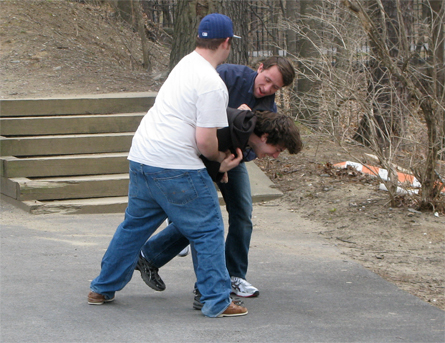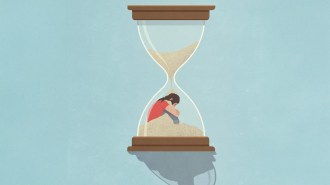Some fights vanish in plain sight
Dramatic but unexpected events often get missed
Bare-knuckled brawlers sometimes have to fight to be seen. College students chasing a person across campus frequently don’t notice two guys beating up a lone victim in plain sight, a new set of experiments finds.

That result has real-world implications, say psychologist Christopher Chabris of Union College in Schenectady, N.Y., and his colleagues. Consider a Boston police officer who was sentenced to prison in 1998 because jurors didn’t believe his claim that, while running after a murder suspect, he passed but didn’t see fellow officers pummeling a misidentified suspect.
Science can’t determine what the Beantown cop actually saw, but his story was plausible, Chabris’ team reports in a paper published June 9 in the online journal i-Perception.
“Even under less demanding conditions than the police officer must have experienced, it’s possible to miss something as obvious as a fight,” says psychologist and study coauthor Daniel Simons of the University of Illinois in Champaign.
Previous attention research has found, for example, that volunteers counting passes made by basketball players on a video don’t see a gorilla-suited person walk through the scene (SN: 5/21/11, p. 16). Related research conducted by psychologist Jason Watson of the University of Utah in Salt Lake City indicates that talking on a cell phone distracts most car drivers from noticing road hazards (SN Online: 3/31/10).
“Limits on attention capacity catch up with all of us, and with potentially dire real-world consequences,” Watson says.
Psychologist Ira Hyman of Western Washington University in Bellingham says the new findings illustrate people’s tendency to overestimate their awareness of immediate surroundings. “We don’t yet know how strong this illusion is,” Hyman says.
In the new investigation, students jogged 9 meters behind a runner on a 400-meter path while counting how often the runner touched his head. Along the way, two men shouted, grunted and pretended to beat up a third man in a driveway 8 meters off the path.
At night on a lighted path — a situation faced by the Boston police officer — about one-third of chasers reported seeing the fight and recalled details of the beating. In separate runs during the day, 56 percent of volunteers saw the fight, which remained visible for about 30 seconds.
That figure fell to 42 percent among the daytime participants given the tougher task of separately counting each time the runner used his left or right hand to touch his head. Almost three-quarters of the daytime volunteers who didn’t count head touches at all — and thus could devote more attention to their surroundings — noticed the faux fight.
Other experiments show that a person’s visual system quickly and efficiently extracts general information about a scene’s context, creating a false confidence that interesting details must have been seen, says Harvard Medical School psychologist Todd Horowitz. “Had Chabris’ team told subjects to search for a fight, of course, they likely would have spotted it,” he says.







